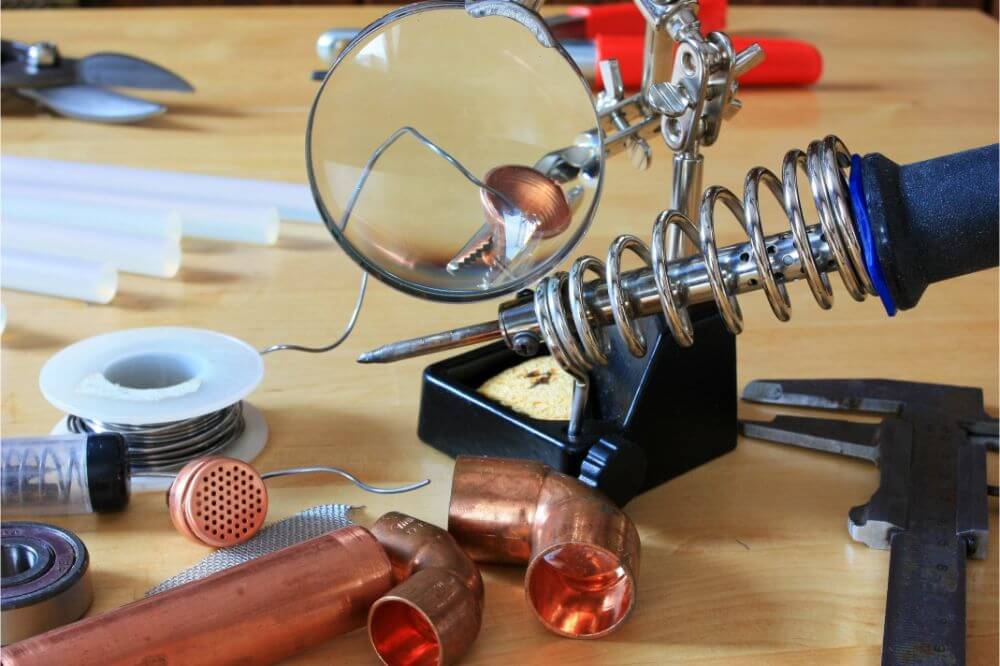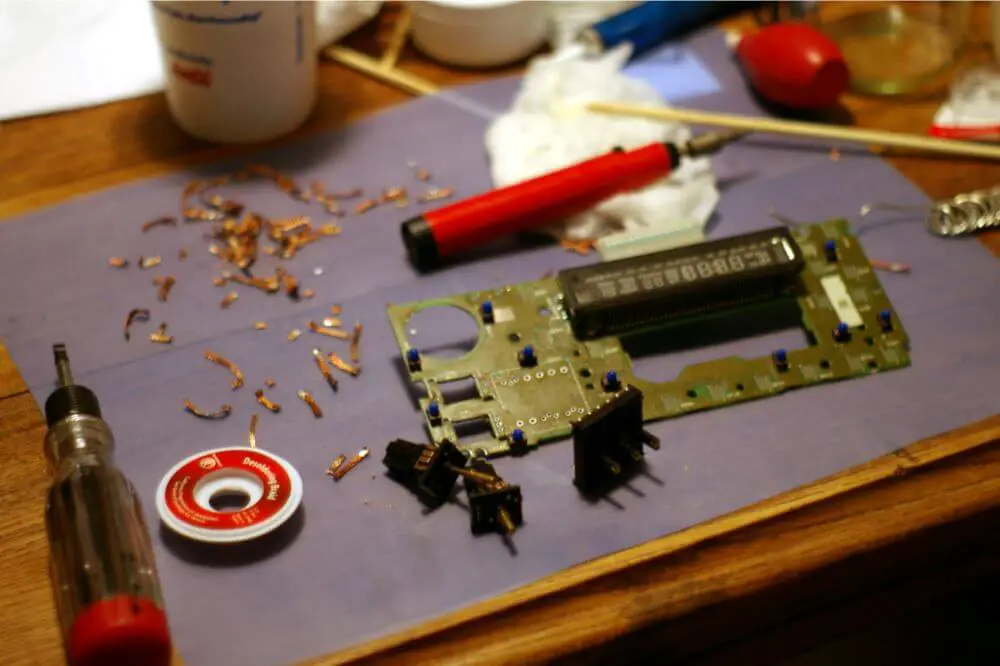It’s no doubt that the soldering iron is the go-to tool when removing solder. However, it isn’t the only option available, as there are many other options available. If you’re enthusiastic about carrying out soldering tasks, it’s also essential to know of other ways how removing solder can be done.
You’ll be a lot more flexible by knowing a different technique of desoldering other than using your soldering iron. Therefore, if you forget your soldering iron, or there’s no electricity, it’s still possible to carry out the soldering tasks.
If you don’t know what to do during the desoldering process, read through this detailed article. Here, you’ll get to learn of the steps to follow during the desoldering process.
Steps of Removing Solder With Your Soldering Iron
Step 1
You should start by heating the flat head screwdriver using a propane torch. It’s recommended you use a screwdriver that you won’t mind if it gets discolored. Moreover, get another solder to be attached that’s long enough to safeguard yourself from getting burned while using the propane flame.
Make sure to place the screwdriver to a flame for a prolonged duration until it becomes read due to the heat. You also need to do this to the solder that needs to be removed to avoid the cooling down of the screwdriver before starting the desoldering process.
Step 2
Place the red hot screwdriver on the solder. As you do this, make sure to remain cautious to avoid contact with the surrounding circuitry when getting rid of the solder from the electrical equipment. All this needs to be done on a flat surface since this prevents the running of the solder once it’s in a molten state.
You should touch the topmost part of your solder and, after that, gently apply pressure while pressing it downwards. By doing this, heat will be transferred to the solder from the screwdriver, leading to the melting of the solder.
Step 3
Use the cold flat screwdriver to remove the liquid solder hastily. When done correctly, the liquid solder should attach to the cold screwdriver properly, thereby allowing you to get rid of it from the surface. If you feel all the solder isn’t yet removed, feel free to repeat this process to remove any remaining solder.
If the solder cools very quickly, don’t use your cold screwdriver when “chipping” or “picking,” mostly when this is being done on an electronic circuit. Failure to do this might lead to the total damage of the surrounding parts.
Step 4
Using a propane torch, heat the cold screwdriver, which has the solder. After doing this, the solder will start to melt off slowly, and you can clean it off when it’s still in liquid form. When cleaning this screwdriver with an old rag, make sure to hold it far from your body, thereby lowering the risk of hot solder jumping onto your skin or clothing.

Safety Tips To Observe When Removing Solder Without A Soldering Iron
Desoldering is essential when doing numerous tasks such as replacing broken parts on the circuit board, repairing solder joints, or troubleshooting a defective electrical component. Nonetheless, you need to be careful throughout the whole process to safeguard your wellbeing. Here are some valuable safety measures you should observe when using the soldering iron.
Minimize Exposure of Crucial Electronic Components To Heat
Exposing the electrical board and components to high temperatures for an extended duration increases the chances of getting destroyed. Therefore, you should ensure this doesn’t happen by ensuring the temperature is set at reasonable levels. By doing this, you’ll protect the components from getting destroyed and make the desoldering process a lot easier.
Use Flux During Desoldering
When removing the solder, make sure to add some flux. This is important because it aids in transferring the heat, as well as removing the metal oxides from the solder joints. In addition to this, it allows the solder to start flowing a lot more easily.
Protect Your Workspace From Heat Produced During Desoldering
The process of desoldering usually entails the production of high temperatures of heat. Because of this, it’s essential to have a silicone soldering mat where you can place the electric circuit in which the solder needs to be removed.
Consider Adding Leaded Solder
The melting point of leaded solder is usually a lot lower compared to that of lead-free solder. However, its addition leads to the lowering of the overall melting temperature and, as a result making the entire desoldering process a lot easier. It’s thus recommended you do this to make this whole process a lot easier for you.
Never Breath In The Flux And Solder Fumes
The fumes produced during the removal of the solder are harmful to your overall well being. You should thus look to safeguard yourself from any possible adverse effects of the desoldering process by having a blowing fan or a fume extractor. With such appliances in place, you can be confident that you won’t expose yourself to any possible harm while desoldering in your workspace.
What’s The Ideal Temperature for Removing Solder?
It’s quite hard to decide which is the best temperature to remove solder. This is crucial because your objective is to avoid overheating, which leads to the electrical board getting destroyed.
Therefore, you should opt for the lowest possible temperature that allows the removal of the component within the shortest duration. However, there’s no exact temperature, which is ideal, but you should instead look at the various factors involved. These factors include:
- How many layers are present in the PCB?
- How heavy is the component being disordered?
- The kind of solder used when soldering the component.
- Are there any power, ground, or thermal planes connected to the component?
By considering these factors mentioned above, you’ll be able to determine the perfect temperature to remove the solder.
Conclusion
Whereas the soldering iron plays a critical role in desoldering, it’s also important to know another way to remove solder if you don’t have one. If this is something you had no idea about, reading this in-depth article has given you the necessary insights to know what to do should this be necessary.

